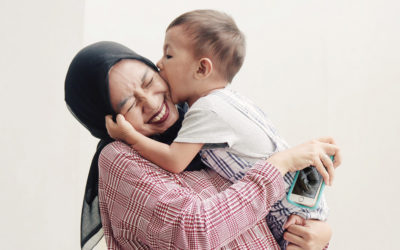Autism is widely known for a handful of common symptoms. Depending on the severity of the individual’s symptoms they can display some physical manifestations as well. Those physical and more visual symptoms are called repetitive behaviors. Autism research has long studied what these repetitive behaviors mean and why they occur. In this post we’ll discuss repetitive behaviors and stimming on the autism spectrum.
Common Repetitive Behaviors
Some of the more common repetitive behaviors children on the spectrum display include:
- Hand-flapping
- Involuntary body rocking
- Spinning or pacing in circles
- Muttering, grunting or other vocalizations
- Other involuntary movements
These repetitive behaviors may surface during emotional times for the child, or when they’re alone. They may vary with your child’s environment or as a direct result to what stimuli they’re being exposed to. Many parents wonder, why exactly does my child do these things? The answer can be a bit complicated.
Self-Stimulatory Behaviors
Many autism researchers believed repetitive behaviors were tied directly to trauma and stress. As a result, repetitive behaviors were seen as a negative hindrance to children on the spectrum’s development and learning. Since then, autism research has taken a more holistic approach to why these behaviors occur. What they found is that many of these behaviors are “self-stimulatory” behaviors, otherwise known as stimming.
Stimming occurs even in adults on the spectrum, and those individuals say they stim for a variety of reasons. As such, those in the autism community have recently encouraged a more inclusive look at the repetitive behaviors associated with stimming as a form of coping and emotional expression.
Stimming in Children
While the behaviors can certainly result from anxiety or stress and may be unproductive for your child- they may be a way for them to express their needs or serve as a reflection of their mood. We recommend taking mental note of what sort of sensory and environmental stimuli seem to trigger the behavior, and encouraging open and honest communication with your child about them. Instead of focusing on suppressing the behavior, work on the ways they might be able to express themselves in productive and articulate ways.
For more ABA and autism related news and tips visit our blog and follow us on Facebook, Instagram, and Twitter! If you have questions regarding ABA therapy services or you’re interested in visiting one of our locations, don’t hesitate to reach out to us on our contact page. We’re always here to answer your questions and support your family’s needs as best as we can.



